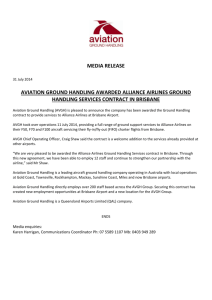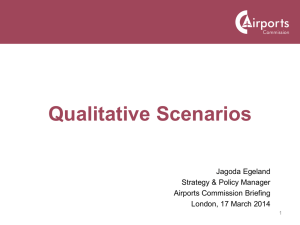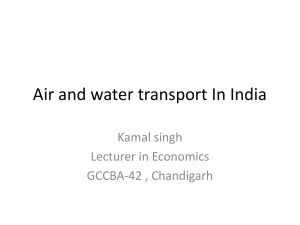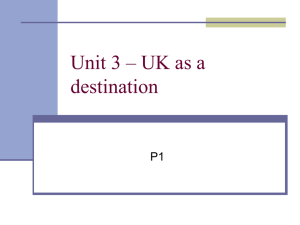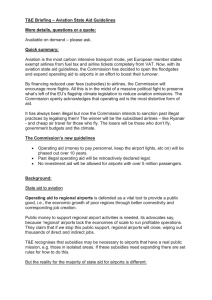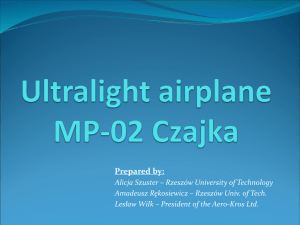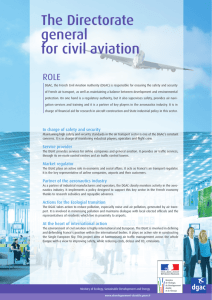Dr Hambi Chaouk
advertisement
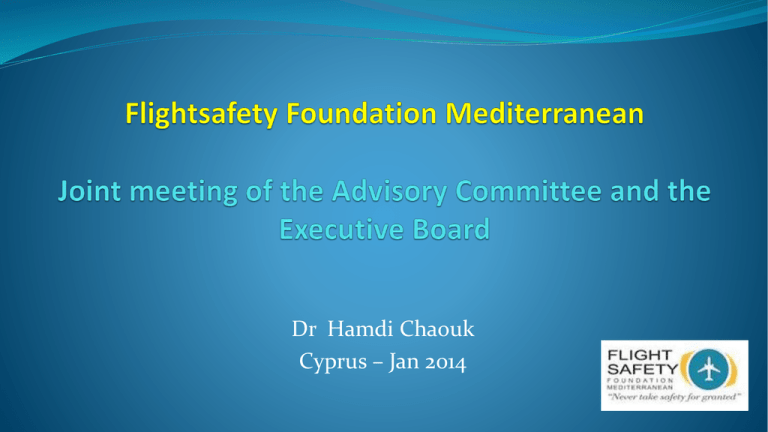
Dr Hamdi Chaouk Cyprus – Jan 2014 Safety Culture Safety Culture is the set of enduring values and attitudes regarding safety issues, shared by every member of every level of an organization. Safety Culture refers to the extent to which every individual and every group of the organization is aware of the risks and unknown hazards induced by its activities; is continuously behaving so as to preserve and enhance safety; is willing and able to adapt itself when facing safety issues; is willing to communicate safety issues; and consistently evaluates safety related behavior. However Lack of Safety - Reasons Political interferences Corruption Mismanagement and luck of vision and strategy Non autonomous civil aviation Lack of private sector participation Lack of proper budget and funding Lack of efficient human resources Unethical well connected and powerful Operators Inefficient aviation infrastructure Civil Aviation Authorities Some Authorities are: Still non compliance with ICAO’s directives Subject to political interference in corruptive ways Non autonomous or independent (i.e. not capable regulators) Weak in enforcing aviation regulations Not capable of recruiting capable personnel Reluctant to change AIRLINEs IATA has made commendable achievements in the aviation industry through: Supporting and implementing ICAO guidance and recommendations IOSA certification Aviation training Encouraging privatization and liberalization Continuous improvement of airlines operational standards However, not all airlines are IATA members which means that lots of work is still required to bond the gap and enhance safety AIRPORTs ACI is still basically new compared to IATA and airports are different to Airlines : States still consider airports as national assets especially for the facts that some airports (capital ones) are somehow profitable No international certification of airport operational quality Airports are of wide classifications in term of size, purpose, and complexity of operational types. A lots of work are still needed in the area of airports to enhance safety. The gap is too wide between airline development and airport development incidents/accidents causes 4% 5% lighting and marking runways and taxiways 24% information 33% external hazards Apron 5% ATC ops/procedures Aerodromes 3% 26% Regional Problems Africa high accident rate – labor problems – infrastructure problems - liberalization and privatization difficulties. Middle East Lack of growth management – Inefficiency – poor vision for the planned US$68 billions investment. Europe Lack of delivery – micro-management – congestion. Regional Problems Russia and CIS Safety concerns – business practice not in line with Global standards United States Adverse effects due to domestic politics – Weak leadership. Asia Pacific Lack of harmonization – Lack of regional aviation organization. Lack of managing huge growth. “ The organizational causes of this accident are rooted in the Space Shuttle Program’s history and culture…. …Cultural traits and organizational practices detrimental to safety were allowed to develop, including: • reliance on past success as a substitute for sound engineering • organizational barriers that prevented effective communication of critical safety information and stifled professional differences of opinion …” Culture is a basic issue in all these accidents • Our culture determines what we regard as important • Our culture determines what we see as normal and acceptable • Culture acts as a multiplier on all safety elements – Plant - equipment – Process – People Safety Culture The Added Ingredient • Safety Management Systems and Safety Cases provide a • • • systematic approach to safety Safety Management systems are still driven by paper Minimum standards can be defined but this is not the best way to obtain the extra benefits A good safety culture fills in the gaps • “Sound systems, practices and procedures are not adequate if merely practised mechanically. They require an effective safety culture to flourish.” • So you need Safety Management Systems AND a Safety Culture Safety Culture Organizational Commitment Safety Values Safety fundamentals Going beyond Compliance Safety Values (SV): Attitudes and values expressed in words and actions by leadership related to safety. Safety performance should be actively managed and monitored with the same systematic oversight effort and attention given to exceeding goals. Such as company finances Safety Fundamentals (SF): Compliance with regulated aspects of safety such as training requirements, manuals and procedures, equipment maintenance, and the coordination of activity within and between teams/units. The organization should encourage safe practices as a way of doing business and provide a solid framework for the organization, its managers and line employees, to meet those safety requirements. Going Beyond Compliance (GBC): Priority given to safety in the allocation of company resources even though they are not required by regulations. This may be reflected in areas such as employee rostering, scheduling of shiftwork and rest time, providing advanced technology when essential, fatigue management programs and other scientifically based risk management systems. Improvements in Safety Performance Numbers of Incidents Technology • • • • Engineering Equipment Safety Compliance Systems • • • • Time Integrating HSE Certification Competence Risk Assessment • • • • • Behaviours Leadership Accountability Attitudes HSE as a profit centre Culture Technology may Fail Status of Aviation in the Middle East MENA aviation status • Strong Airports Development Process • Lack of Human resources in Airports • Miss-management of financial resources • Unwillingness to Privatize airports • Deteriorating Political & security stability • Large aircraft purchase orders (mainly Gulf states) • Imbalance in MENA aviation resources management • Inefficient aviation regulators MENA airlines ownership MENA airports ownership MENA Airports Projects ($68 Billions) THE END Thank you


